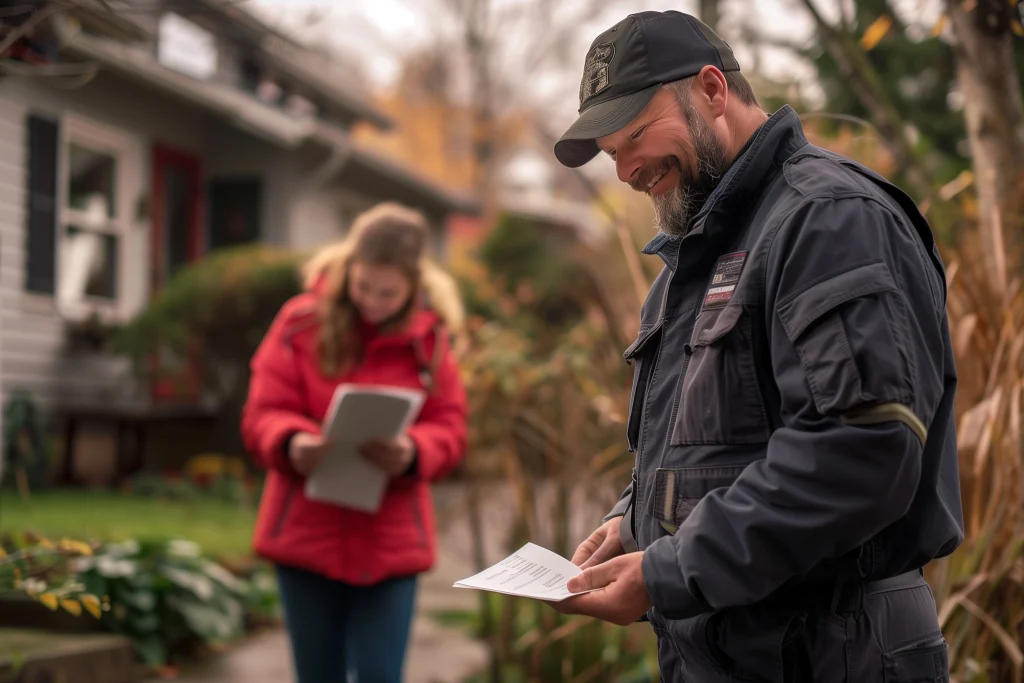-
Dive into Online Resources
Begin your neighborhood exploration online. Utilize local social media groups and forums to gauge the community’s pulse. Engaging in these platforms can offer insights into the residents’ experiences and any prevalent local issues. Google Maps is another excellent tool, as it not only reveals the geographical layout of an area but also highlights local businesses, and parks, and gives a sense of the traffic flow.
Additionally, for deeper insights into property values, the HM Land Registry UK House Price Index is a valuable resource. It provides historical and current data on property values, which can help you understand the market trends and economic health of the neighborhood.
This online exploration phase can paint a vivid picture of daily life in the area and offer a preliminary sense of whether the neighborhood aligns with your preferences and lifestyle.
-
Analyze Property Value Trends
Understanding the property value trends in a neighborhood is crucial as it provides insight into the area’s economic health and future potential. This analysis can help you determine if your investment will appreciate over time.
Key Points to Consider
Appreciation vs. Depreciation: Check if property values are appreciating, indicating a desirable and growing area, or if they are declining, which could signal potential issues in the neighborhood.
Historical Data Analysis: Look at property value trends over several years to distinguish between short-term fluctuations and long-term trends.
Sources for Data: Utilize real estate websites, which provide comprehensive historical data on property values.
Local Real Estate Insights: Speak with local estate agents for context on why certain trends are occurring, such as new developments, changes in local amenities, or shifts in the job market.
Future Investment Potential: Assess whether the neighborhood is likely to be a sound long-term investment based on these trends.
-
Investigate Future Developments
When considering a neighborhood for your future home, it’s vital to research any planned developments or infrastructure changes. This information, typically available through local planning departments or council websites, can provide insight into what the area might look like in the coming years. Whether it’s new housing projects, commercial developments, or improvements in public transportation, each has the potential to significantly impact your daily life and the long-term appeal of the neighborhood.
For example, while new amenities could enhance convenience and lifestyle, construction projects might temporarily bring noise and increased traffic. Moreover, certain developments, like the addition of schools or healthcare facilities, could positively influence property values over time. By understanding these plans, you can gauge not just the present state of the neighborhood but also anticipate its growth and development, ensuring your investment is sound and aligns with your long-term living preferences.
-
Take a Walk Around
Physically walking through a neighborhood is a valuable step in understanding its true character. Here are key reasons why a stroll can be enlightening:
Assess Cleanliness and Upkeep: Observe the cleanliness of the streets and the condition of the homes. Well-maintained areas often reflect a strong community spirit.
Gauge the Atmosphere: Feel the neighborhood’s vibe. Is it quiet and family-oriented, or vibrant and bustling? This helps you understand if it matches your lifestyle.
Evaluate Safety: Notice how safe the area feels at different times, especially in the evenings. Look for signs of community vigilance and well-lit streets.
Observe Neighborly Interaction: Pay attention to how residents interact. Frequent, friendly exchanges can indicate a close-knit community.
Understand Noise Levels: Listen for traffic noise, barking dogs, or loud music. This can affect your daily living experience.

-
Talk to the Locals
One of the best ways to gain genuine insights into a neighborhood is by speaking with the people who live there. Current residents can provide a wealth of information and perspectives that you might not find through online research or official statistics.
- Engaging with locals can uncover the community’s dynamics, like how neighbors interact and whether it’s a close-knit environment.
- Residents can share their experiences regarding the area’s noise levels, which can vary from daytime to nighttime. This can be crucial if you’re sensitive to noise or seeking a peaceful environment.
- They can offer insights into the frequency and quality of community events. Regular, well-organized events can be a sign of a vibrant and engaged community.
- Locals can also provide unfiltered opinions about the pros and cons of living in the area, covering aspects you might not have considered, such as local services, traffic during peak hours, or the effectiveness of community management.
-
Check Crime Rates
Prioritizing safety is essential when choosing a new neighborhood. To get a clear picture of the safety of an area, researching local crime rates is indispensable. Websites like CityProtect.com and CrimeGrade.org provide comprehensive, up-to-date crime statistics that can be invaluable in this research. They offer insights into not just the frequency of crimes but also the types, ranging from minor offenses to more serious incidents.
While it’s important to remember that no area is completely crime-free, these statistics can help you understand the relative safety of a neighborhood compared to others. This information can also be useful for determining the need for security measures, like home alarm systems, and gauging the overall sense of community safety. Understanding crime rates and types gives a more complete picture of what life might be like in the neighborhood, helping you make a more informed decision about where to buy your home.
-
Evaluate Schools and Daycare Facilities
If you have children or are planning to start a family, the quality of local education is a key factor in choosing a neighborhood. Researching schools and daycare facilities is therefore essential.
School Ratings and Curriculum: Look up the schools’ Ofsted ratings or equivalent assessments, and review their curricular offerings. These can provide a sense of the educational standards and opportunities available.
Reputation and Feedback: Seek out feedback from local parents or community forums. Personal experiences can offer insights beyond official ratings.
Proximity and Accessibility: Consider the distance from potential homes to these institutions. Proximity to good schools can also positively impact property values.
-
Experience the Commute
Understanding the realities of your daily commute can greatly affect your overall quality of life. Before deciding on a new home, it’s wise to personally experience the commute. Conduct a trial run by driving or using public transport during your typical commuting hours. This firsthand experience can reveal a lot about traffic patterns, congestion levels, and the reliability of public transportation.
It’s also beneficial to explore alternative routes and different modes of transportation to find the most efficient and comfortable commuting options. Additionally, stay informed about any future changes in local transportation infrastructure. Upcoming developments like new transit routes or road construction can significantly alter commute times and convenience in the future. By thoroughly evaluating your commute, you can ensure that your new home location aligns with your lifestyle and minimizes daily stress.
-
Consider Climate and Environmental Risks
When selecting a neighborhood, it’s important to understand the local climate and environmental risks, as these can have significant impacts on both your lifestyle and property.
Assess Natural Event Risks: Investigate the area’s history concerning natural events like flooding or extreme weather conditions. This is particularly important if the neighborhood is near water bodies or in areas known for natural disasters. Understanding these risks can help you prepare for potential challenges.
Impact on Insurance: Be aware that living in areas with higher environmental risks can affect your home insurance. In regions prone to events like flooding, insurance premiums may be higher, and coverage options might be different. It’s essential to factor in these potential costs when considering a property.
Community Preparedness: Research what measures the local community and authorities have in place to deal with environmental risks. Effective measures, such as flood defenses or well-developed emergency response plans, can significantly mitigate these risks and provide peace of mind.
-
Utilize Neighborhood Ratings and Reviews
In your quest to find the perfect neighborhood, online platforms offering ratings and reviews can be exceptionally insightful. Websites like AreaVibes.com and Niche.com aggregate reviews and ratings from residents who have first-hand experience living in the area. These platforms cover a range of factors that contribute to the overall quality of life, including safety, educational facilities, local amenities, and noise levels. Such comprehensive reviews provide a multi-dimensional view of the neighborhood, highlighting both its strengths and potential drawbacks.
Additionally, these sites allow for the comparison of different neighborhoods, enabling you to weigh your options side by side. By taking advantage of these resources, you gain access to a broader spectrum of opinions and information, which can be instrumental in making a well-informed decision about your future home.

Finding your dream home is a journey that involves much more than just selecting the right house—it’s about choosing a neighborhood that resonates with your lifestyle and aspirations. The process of researching and understanding a community is an investment in your future happiness and well-being. It’s about looking beyond the immediate appeal of a property to the broader picture of life in that area.
By taking the time to thoroughly explore and evaluate a neighborhood, you are not just making a financial investment but also investing in your quality of life. Remember, the true essence of a home extends beyond its walls to the community and environment that surrounds it. With careful consideration and thoughtful research, you can find a place where you and your family can thrive for years to come.


